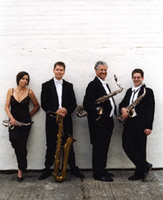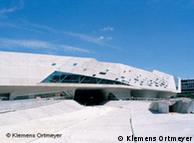 Colgate University
Colgate University  Colgate University
Colgate University is a private
liberal arts college located in the
Village of Hamilton in
Madison County, New York, USA. It was originally founded in 1819 as a Baptist seminary, but has since become non-denominational.
As of 2007, Colgate is
ranked 16th (up one from the previous year) in
U.S. News and World Report's rankings of liberal arts colleges in the United States. It is also listed as one of thirty
Hidden Ivies. Colgate students compete in 23
NCAA Division I sports.
Colgate has a distinct architectural style. Its first building, West Hall, was built by students and faculty from stones from Colgate's own rock quarry, and a majority of the newer buildings are built in a similar fashion. The most distinctive building on campus is the Chapel (Colgate Memorial Chapel), which is used for lectures, performances, concerts, and religious services.
History Colgate offers 51 undergraduate
concentrations [3] leading to a
Bachelor of Arts degree, all of which are registered officially with the
New York State Department of Education. The three most common majors are
biology,
economics, and
political science. In addition, Colgate has strong foreign language, physics, history,
psychology/
neuroscience and
geology departments.
The University has a small graduate (Master of Arts) program for Education, which graduates 3-7 students each year.
In addition to regular campus courses, the university offers some 20, semester-long off-campus study groups each year, including programs in
Australia,
China,
Japan,
India, several Western European countries,
Washington, DC, and the
National Institutes of Health. Approximately two-thirds of Colgate undergraduates study abroad, which is a high proportion considering other colleges and universities in the United States. About 95% of seniors graduate, and most alumni proceed to graduate schools in law, administration, engineering, medicine, the arts and the sciences, as well as to financial, administrative or scientific occupations. There is hardly a walk of life where alumni of Colgate University are not represented. However, a significant clustering occurs in business, the media, and the life and earth sciences.
Academics Colgate founded the
Upstate Institute in 2003. The Institute was created to be a center of information and knowledge about upstate New York. Currently, they do research on counties in the area, as well as support outreach and volunteer organizations.
The school has also provided assistance to the town of Hamilton in its attempts to revitalize and renovate its buildings and businesses. Colgate was one of the initial sponsors of the
Partnership for Community Development, which seeks economic development and growth in the area.
Initiatives  Campus life
Campus life All first-year students are required to live "up the hill" in residence halls located close to the academic buildings. West Hall, the oldest building on campus (built in 1827), is still used as first-year housing. Second-year students can live in dorm housing on campus or apartments off the hill. Upperclassmen can choose to live in campus housing, including apartments, "townhouses" built down Broad Street, or themed houses. Around 250 seniors can choose to live in off-campus homes or apartments.
Students involved in Greek life have the options of living in their organization's house. As of the Fall 2005 semester, there are
six fraternities and four sororities recognized on campus.
Campus media Colgate has four a cappella groups.
The Colgate Thirteen, an all-male
a cappella group, was founded in
1942 in a split from the University Glee Club and is the country's third oldest. Known as the "thirteen," they notably performed the
National Anthem at
Super Bowl XIII.
The Swinging 'Gates, Colgate's all-female a cappella group, was founded in 1974. The group has built many traditions with the Colgate Thirteen over the years and roam the country singing for alums. The 'Gates were
complimented by columnist Peter King in Sports Illustrated.
Colgate has two coed a cappella groups: The Colgate Resolutions, and The Colgate Dischords. The former was founded in 1992; the latter in the fall of 2001, making it the newest a cappella group on campus. They perform at Colgate and other schools at both formal and informal venues.
[4] A cappella Konosioni, Colgate's senior honor society, honors outstanding achievement in co-curricular activities and the spirit of Colgate. Each year 26 students (a multiple of 13) are peer-selected for membership.
It is said that Colgate was founded by thirteen men with thirteen dollars, so the number 13 is lucky to Colgate. This manifests itself in a number of ways, such as Colgate's address and the number of students in certain groups such as Konosioni.
The 1932 Colgate football team was the only team in history to be undefeated, untied, and unscored upon. They finished the season 9-0.
[5] The team became known as "Undefeated, untied, unscored upon, and uninvited," after not getting a bid to the Rose Bowl that season.
In 1936, the Colgate swim team made its first trip to
Fort Lauderdale, Florida for spring break training at the Casino Pool. This became a regular tradition for Colgate that caught on with other schools across the country, and proved to be the genesis of the college
spring break trip.
[6] The Colgate University Rugby Football Club is the oldest club sport at Colgate, founded in 1967. It participates in the New York State Rugby Football Conference, Division II. Their games are played on Academy Field, near Oak Drive on campus.
Ellis Island National Monument displays an
anti-immigration statement by George Cutten, Colgate's eighth President, warning that "The danger the '
melting pot' brings to the nation is the breeding out of the higher divisions of the white race...."
[7] Traditions and legacies Colgate is listed as one of America's 25 "new Ivies" by
Newsweek magazine.
[8] It is also on the list of "100 best campuses for LGBT students."
[9] In October 2006, Colgate was ranked as the 2nd most fit college in America by
Men's Fitness.
[10] The University's campus is recognized by many as one of the most beautiful in the country and earned a 5th place ranking on the StudentsReview poll in 2005.
[11] Acknowledgements
- 2234 accepted out of 8759 applications
- The admissions office is not looking at the writing section of the new SAT until they can see if it is an accurate predictor of academic achievement in college.
Acceptance rate: 25.5%
2234 accepted out of 8759 applications
SAT middle 50%: 660-750 verbal, 660-740 math
The admissions office is not looking at the writing section of the new SAT until they can see if it is an accurate predictor of academic achievement in college.
ACT middle 50%: 30-33
Students from public/private high schools: 69%/31%
Tuition / Tuition, Fees, Room and Board - $34,795/$43,560
Student-Faculty Ratio - 10:1
Average class size - 19
Statistics (Class of 2011 - as of summer 2007) 80% of Colgate students are involved in sports on three different levels, varsity, club and intramural. Approximately 25% of students are involved in varsity athletics. There are 23 varsity teams, over 40 club sports teams, and 18 different intramural sports.
Colgate is part of
NCAA Division I for all varsity sports except football, which is
Division I-AA. The athletic teams are called the "Raiders," and the traditional team colors are maroon and white, with a more recent addition of gray in the 1970s. Colgate plays as part of either the
Patriot League or the
ECAC Hockey League, depending on the sport.
For much of its history, Colgate's sports teams were called the "Red Raiders." The origin of the name is disputed -- some claim it was in reference to the school color, maroon, while others say that it was a reference to the team's ability to defeat its much larger rival, the
Cornell University "Big Red." In the 1970s, the school debated changing the name because of concerns that it was offensive to
Native Americans. At that time the name was kept, but the mascot was changed from a Native American to a hand holding a torch. In 2001, a group of students approached the administration with the concern that the name "Red Raiders" still implied a Native American mascot. The school agreed to drop the word "Red" from the team name starting in the 2001-02 school year, due to concerns about the lingering association of "Red" with previously used Native American iconography (whether or not the use of the term "Red" was intended as such).
Maroon News editorial, 27 April 2001 Some local TV outlets still use the logo with "Red Raiders" on it. A new mascot was introduced in 2006-07.
In 1989-90, Colgate became the smallest school in NCAA Division I history to reach the NCAA Men's Ice Hockey Championship Tournament Final, where they lost to the University of Wisconsin.
Colgate University's football team has a rich history. The team was given a Division I first place ranking by
Parke Davis in 1875 and 1932, and appeared in the
Associated Press Division I polls in 1942 and 1977. Colgate began playing in NCAA Division I-AA in 1982, and made the Division I-AA football playoffs in 1982, 1983, 1997, 1998, 1999, 2003, and 2005.
[12],
[13] In the 2003 season, for the first time, the Raiders made it to the NCAA
I-AA championship game in football, where they lost to the
University of Delaware. Their season record was 15-1. At the time, they had the longest winning streak in all of Division I football, including one win over a Division
I-A team,
SUNY Buffalo. The team received a second place ranking by
Sports Network at the conclusion of the season.
Cornell is a common rival in all sports, while most of the teams other than football, golf, and hockey also compete annually against
Syracuse University. Hockey games against Cornell are major events on campus, with students lining up for hours before the game in order to secure tickets. Cornell and Syracuse are both within two hours of Colgate's campus. Colgate and Syracuse were once fierce rivals in football (there are some old traditions related to their game), but a variety of factors, including the splitting of Division I football into Division I-A and Division I-AA (wins against I-AA opposition do not help a I-A team gain
BCS eligibility) helped end the annual football rivalry after 1961, with the exception of games taking place in 1981, 1982 and 1987. Their lacrosse rivalry resumed in 2006, after the teams had not met for a few years.
Athletics Colgate has a very strong
Outdoor Education program. Courses are taught by student instructors who undergo a rigorous six-month training program including
Wilderness First Responder certification. Trainees are chosen by an application process in the early fall that is open to all first-year and sophomore students. Courses include hiking, backpacking, sea kayaking, whitewater kayaking, canoeing, rock climbing, caving, geo-caching, outdoor cooking, cross-country skiing, ice climbing, telemark skiing, x-country ski touring, and winter camping. Each August before first-year orientation, OE takes between 160 and 300 first-year students on 8-person, week-long back country canoeing, backpacking, and kayaking trips (called
'Wilderness Adventure') to the
Adirondacks.
Controversy over Greek reorganization Main article: List of Colgate University people

 Places of interest
Places of interest Early life and career
Early life and career
 Scottish settlement
Scottish settlement Oracle script script inquiry about rain (annotated)
Oracle script script inquiry about rain (annotated) Notes
Notes Discography
Discography


 Campus life
Campus life

 Early life
Early life Personal life
Personal life Minor towns and villages
Minor towns and villages